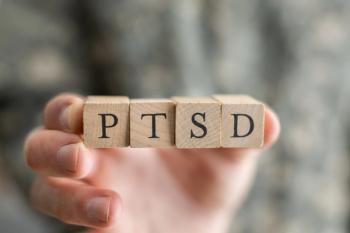
- Psychiatric Times Vol 16 No 9
- Volume 16
- Issue 9
Developmental Traumatology: Neurobiological Development in Maltreated Children With PTSD
Developmental traumatology research is the systemic investigation of the psychiatric and psychobiological impact of overwhelming and chronic interpersonal violence on the developing child.
Developmental traumatology research is the systemic investigation of the psychiatric and psychobiological impact of overwhelming and chronic interpersonal violence on the developing child. This relatively new area of study synthesizes knowledge from an array of scientific fields including developmental psychopathology, developmental neuroscience, and stress and trauma research. Child maltreatment experiences-defined as neglect, physical abuse, sexual abuse, and witnessing domestic and community violence-are increasing in the United States and may be the most common causes of interpersonal traumas and
Childhood is a unique and progressive period of physical, behavioral, cognitive and emotional development. The brain and its biological stress systems are genetically programmed to be influenced by early experience. Trauma involves both traumatic experiences and developmental consequences (Pynoos et al., 1995). Child abuse experiences may cause delays or deficits in a child's ability to achieve age-appropriate behavioral, cognitive and emotional regulation. Traumatic consequences include the signs and symptoms of PTSD, such as intrusive re-experiencing of the trauma, persistent avoidance of traumatic triggers, numbing of responsiveness and persistent symptoms of increased arousal (APA, 1994). Traumatic stress may have negative effects on the development of biological stress systems, perhaps leading to the various types of psychopathology commonly seen in abused children (Cicchetti and Lynch, 1995; DeBellis and Putnam, 1994; Perry, 1994).
One active area of developmental trauma research involves the effects of maltreatment on major body stress response systems such as the hypothalamic-pituitary-adrenal (HPA) axis and the catecholamine system (the locus ceruleus-norepinephrine/sympathetic nervous system), and on brain maturation (DeBellis et al., 1999b). This article will review evidence suggesting that child abuse may be associated with alterations of the body's major stress systems. Adverse effects on brain development will also be reviewed. The clinical implications of these alterations will be discussed.
There is little research on the neurobiological effects of trauma and PTSD in developing children. Results from recent research at the University of Pittsburgh's Western Psychiatric Institute and Clinic's developmental traumatology laboratory suggest that the overwhelming stress of maltreatment experiences in childhood are associated with alterations of biological stress systems and with adverse influences on brain development (DeBellis et al., 1999a, 1999b).
In one study, 18 prepubertal maltreated children with PTSD and 10 nontraumatized children with overanxious disorder (diagnosed according to the Diagnostic and Statistical Manual of Mental Disorders, Third Edition, Revised) underwent 24-hour urine collection for measurements of urinary-free cortisol (a reflection of HPA axis regulation) and urinary catecholamine excretion. Their results were compared with those of 24 healthy controls. Maltreated subjects with PTSD excreted significantly greater amounts of urinary-free cortisol and catecholamines than did nonabused controls. These biological stress measures correlated positively with the duration of the PTSD trauma and with PTSD's symptoms of intrusive thoughts, avoidance and hyperarousal (DeBellis et al., 1999a).
In a second study, 44 maltreated children and adolescents with PTSD and 61 matched controls underwent comprehensive clinical assessments and anatomical magnetic resonance imaging brain scans. Maltreated subjects with PTSD had 7% and 8% smaller intracranial and cerebral volumes, respectively, than matched controls. The total midsagittal area (the major interconnection between the two hemispheres that is conceptualized as facilitating intercortical communication) and the middle and posterior regions of the corpus callosum were smaller in abused subjects.
In contrast, the right, left and total lateral ventricles were proportionally larger in the PTSD subjects than in controls, after adjustment for intracranial volume. Intracranial volume robustly correlated positively with age of onset of PTSD trauma (i.e., smaller brains were associated with earlier onset of trauma) and negatively with duration of abuse. Symptoms of intrusive thoughts, avoidance, hyperarousal and dissociation correlated negatively with intracranial volume and total corpus callosum and regional measures. The decreased hippocampal volumes reported in adults with PTSD were not found in these subjects (DeBellis et al., 1999b).
In the developing brain, catecholaminergic neurotransmitters and steroid hormones are known to modulate the developmental processes of neuronal migration, differentiation and synaptic proliferation, and may affect overall brain development. (For a review of this topic, see DeBellis et al., 1999b-Ed.) These data suggest that chronically maltreated children with a diagnosis of PTSD manifest alterations of major biological stress systems, including adverse influences on brain development. Although causation cannot be proven because these findings were based on a cross-sectional analysis, the data are intriguing and may have important social policy and treatment implications.
For example, intracranial volume increases steadily until 10 years of age with 75% of adult brain weight occurring by 2 years of age (Carmichael, 1990). Near completion of adult intracranial volume has occurred by 5 years of age (Pfefferbaum et al., 1994). Thus, the availability of community educational and supportive programs targeting children under 5 years of age who are at risk for traumatic experiences is extremely important as a primary preventive measure.
Psychopharmacological treatments for PTSD that dampen the activity of the major biological stress systems (DeBellis, 1997; Perry, 1994), in conjunction with psychotherapy and social skills training, may provide an effective treatment strategy for maltreated children who suffer from PTSD. Treatments may prevent the secondary long-term adverse psychobiological consequences of traumatic stress in these patients.
Caring for children who have suffered prior maltreatment offers unique challenges. Elucidating the biological sequelae and mechanisms of symptom production in PTSD and associated comorbid psychiatric disorders will pave the way for better clinical and social treatment of abused children. Accordingly, prospective longitudinal studies in developmental traumatology are critical to this development of early interventions to attenuate the psychobiological dysregulation and adverse effects on brain development that are associated with maltreatment.
References:
References
American Psychiatric Association (1994), Diagnostic and Statistical Manual of Mental Disorders, Fourth Edition. Washington, D.C.: American Psychiatric Press Inc.
Carmichael A (1990), Physical development and biological influences. In: Handbook of Studies on Child Psychiatry, Tonge BJ, Burrows GD, Werry JS, eds. New York: Elsevier Science Publishing Co.
Cicchetti D, Lynch M (1995), Failures in the expectable environment and their impact on individual development: the case of child maltreatment. In: Developmental Psychopathology, Vol. 2: Risk, Disorder, and Adaptation (Wiley Series on Personality Processes), Cicchetti D, Cohen DJ, eds. New York: John Wiley & Sons Inc., pp 32-71.
DeBellis MD (1997), Posttraumatic stress disorder and acute stress disorder. In: Handbook of Prevention and Treatment with Children and Adolescents: Intervention in the Real World Context, Ammerman RT, Hersen M, eds. New York: John Wiley & Sons Inc., pp 455-494.
DeBellis MD, Baum AS, Birmaher B et al. (1999a), A.E. Bennett Research Award. Developmental traumatology. Part I: Biological stress systems. Biol Psychiatry 45(10):1259-1270 [comments].
DeBellis MD, Keshavan MS, Clark DB et al. (1999b), A.E. Bennett Research Award. Developmental traumatology. Part II: Brain development. Biol Psychiatry 45(10):1271-1284 [comments].
DeBellis MD, Putnam FW (1994), The psychobiology of childhood maltreatment. Child and Adolescent Psychiatric Clinics of North America 3:663-677.
Perry BD (1994), Neurobiological sequelae of childhood trauma: PTSD in children. In: Catecholamine Function in Posttraumatic Stress Disorder: Emerging Concepts, Murburg MM, ed. Washington, D.C.: American Psychiatric Press Inc., pp 233-255.
Pfefferbaum A, Mathalon DH, Sullivan EV et al. (1994), A quantitative magnetic resonance imaging study of changes in brain morphology from infancy to late adulthood. Arch Neurol 51(9):874-887.
Pynoos RS, Steinberg AM, Wraith R (1995), A developmental model of childhood traumatic stress. In: Developmental Psychopathology, Vol. 2: Risk, Disorder, and Adaptation (Wiley Series on Personality Processes), Cicchetti D, Cohen DJ, eds. New York: John Wiley & Sons Inc., pp 72-95.
Articles in this issue
over 26 years ago
Interventions Aim To Prevent Depression in High-Risk Childrenover 26 years ago
The Hotseatover 26 years ago
Financial Crisis Threatens Future of Teaching Hospitalsover 26 years ago
The Crisis of Present-Day Psychiatry: Regaining the PersonalNewsletter
Receive trusted psychiatric news, expert analysis, and clinical insights — subscribe today to support your practice and your patients.















